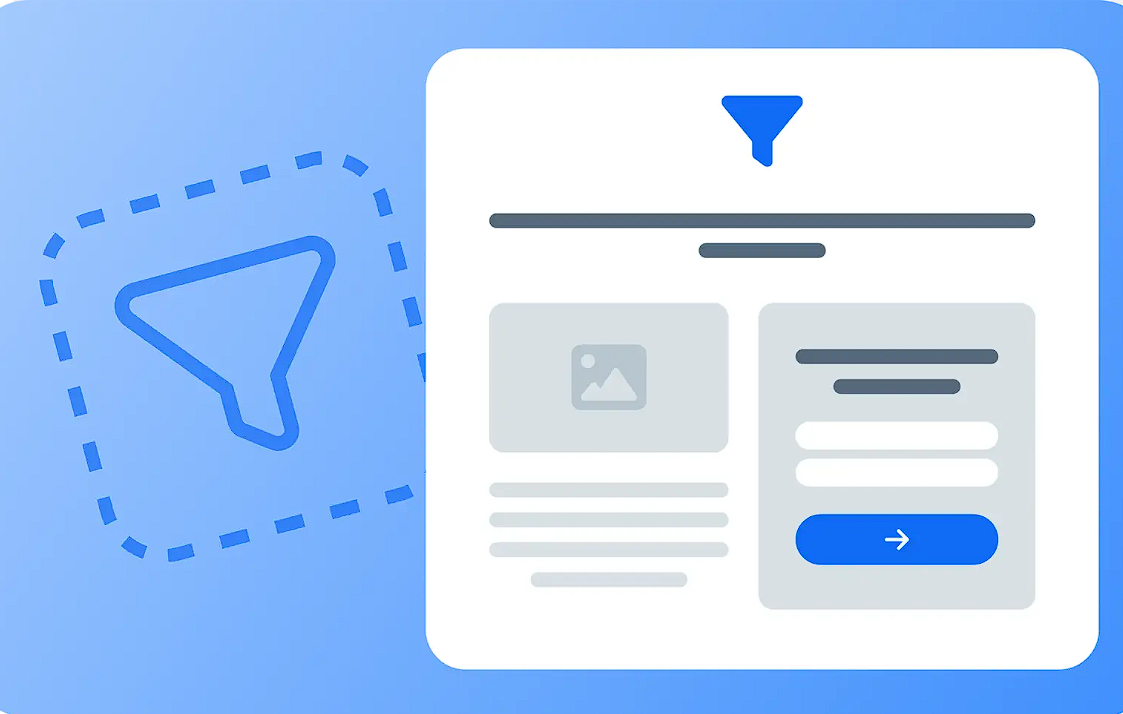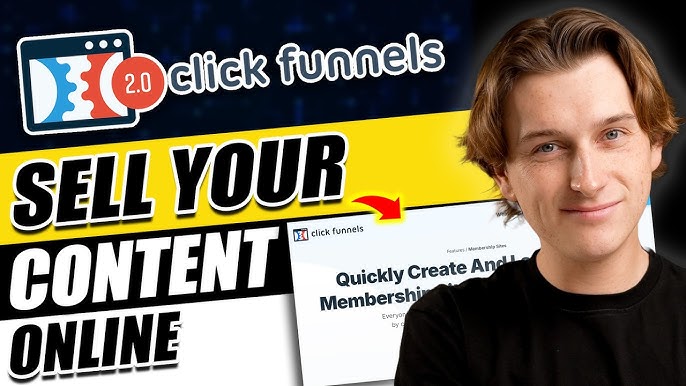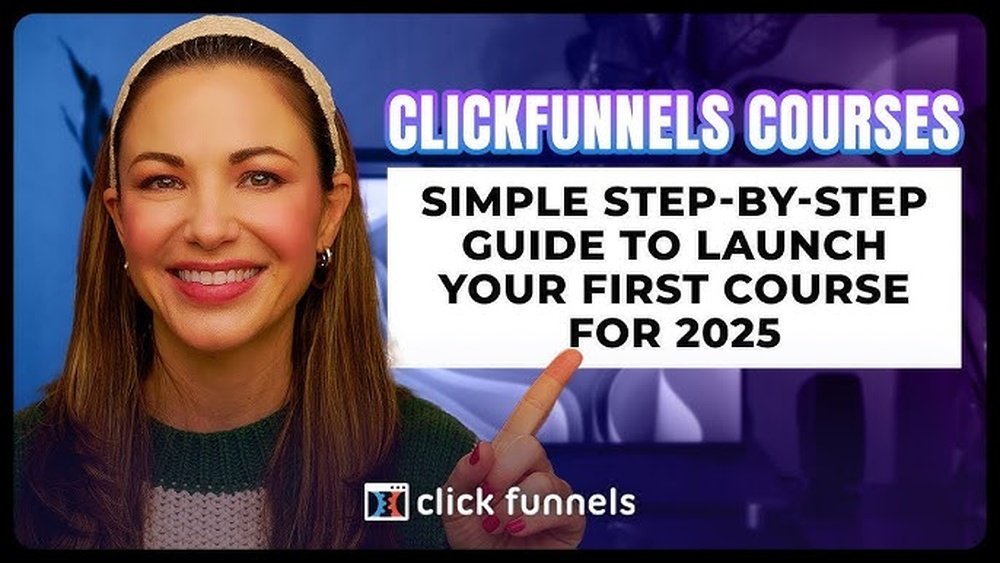Are you ready to turn your ideas into real sales? Building your first sales funnel might seem tricky, but with the right steps, you can create a powerful system that guides visitors straight to your offer.
Imagine having a tool that makes this process easy, even if you’re just starting out. That’s where Clickfunnels comes in. In this step-by-step guide, you’ll discover exactly how to build your first funnel using Clickfunnels. You’ll learn how to attract visitors, capture leads, and turn them into paying customers without any guesswork. Keep reading, and by the end, you’ll have the confidence and tools to launch your own funnel that works for you 24/7. Let’s get started!

Credit: support.myclickfunnels.com
Introduction To Clickfunnels And Its Purpose
ClickFunnels is a tool that helps you create sales funnels easily. A sales funnel is a step-by-step journey that guides visitors to become customers. ClickFunnels makes this process simple without needing coding skills.
This tool is designed for anyone who wants to sell products or services online. It focuses on increasing sales and conversions by organizing the customer’s buying path clearly and effectively.
What Is Clickfunnels And Why Use It?
ClickFunnels is a software platform that builds marketing and sales funnels. It combines all the steps needed to sell online into one system.
- Creates landing pages, sales pages, and order forms
- Manages customer payments and email follow-ups
- Offers easy drag-and-drop page building
- Does not require technical or design skills
Use ClickFunnels to save time and effort while boosting your online sales. It helps you focus on selling, not coding or design.
How Funnels Drive Sales And Conversions
A funnel guides visitors through a series of steps. Each step builds trust and encourages action. This leads to more sales and higher conversion rates.
The funnel usually includes:
- Landing Page: Captures visitor interest.
- Offer Page: Shows product or service details.
- Order Form: Collects payment information.
- Thank You Page: Confirms purchase and upsells.
Funnels reduce confusion for customers. Clear steps make buying easier and faster.
Overview Of The Funnel Building Process
Building a funnel in ClickFunnels involves simple steps:
- Choose a Funnel Type: Select from sales, lead generation, webinar, or membership funnels.
- Select a Template: Pick a ready-made design that fits your goal.
- Customize Pages: Use drag-and-drop tools to add text, images, and videos.
- Set Up Payment: Connect payment gateways like Stripe or PayPal.
- Test and Publish: Preview the funnel, then launch it online.
The process is intuitive and guided. You can build your first funnel in less than an hour.

Credit: www.youtube.com
Key Features Of Clickfunnels For Building Your First Funnel
ClickFunnels offers essential features to create your first sales funnel easily. These tools help you design, automate, and manage funnels without technical skills. The platform guides you through every step, making funnel building faster and simpler.
Below are the main features that help beginners build effective funnels.
Drag-and-drop Page Builder: Simplifying Funnel Design
The drag-and-drop page builder lets you design pages by moving elements on the screen. No coding is needed.
- Add headlines, images, buttons, and videos quickly.
- Arrange sections exactly how you want them.
- Preview changes instantly to see how pages look.
This feature saves time and makes funnel pages look professional.
Pre-built Funnel Templates: Speeding Up Your Setup
ClickFunnels provides ready-made funnel templates. Choose one that fits your goal and customize it.
| Template Type | Use Case |
|---|---|
| Lead Generation | Collect emails and build your list |
| Sales Page | Promote and sell products |
| Webinar Funnel | Register attendees for live or automated webinars |
Templates reduce setup time and ensure a smooth funnel flow.
Integration With Email Autoresponders: Automating Follow-ups
ClickFunnels connects easily with popular email autoresponder services. This automation helps maintain contact with leads.
- Send welcome emails automatically.
- Set up drip campaigns for nurturing leads.
- Track subscriber actions to personalize follow-ups.
Automated emails improve customer engagement and increase conversions.
Payment Gateway Setup: Enabling Seamless Transactions
ClickFunnels supports payment gateways like Stripe and PayPal. This feature lets you accept payments directly through your funnel.
- Connect your payment account easily.
- Offer one-time or subscription payments.
- Secure checkout process boosts buyer confidence.
Payment setup helps turn visitors into paying customers smoothly.
Mobile Optimization: Ensuring Funnels Work On All Devices
Funnels created in ClickFunnels are mobile-optimized. They look good and work well on phones and tablets.
- Responsive designs adjust to screen size automatically.
- Fast loading pages improve user experience.
- Mobile-friendly funnels capture leads anywhere.
This ensures no visitor is lost due to poor mobile display.
Step-by-step Guide To Building Your First Funnel In Clickfunnels
Building your first funnel in ClickFunnels is simpler than it sounds. This guide breaks down the process into clear steps. Each step covers key actions needed to create a functional and attractive sales funnel. Follow along to make your funnel ready for customers.
Creating A New Funnel: Choosing Your Goal And Template
Start by logging into your ClickFunnels dashboard. Click on Create New Funnel. You will see options to select your funnel’s goal. Common goals include:
- Collecting emails
- Making sales
- Hosting webinars
Pick the goal that matches your business need. Next, choose a template that fits your funnel’s purpose. Templates save time and ensure professional design. ClickFunnels offers many templates for different goals and industries.
Customizing Funnel Pages: Using The Page Builder Effectively
After choosing a template, customize your funnel pages using the ClickFunnels page builder. The builder lets you drag and drop elements like text, images, buttons, and videos. You can:
- Edit headlines and descriptions
- Change colors and fonts
- Add testimonials and trust badges
- Insert countdown timers or opt-in forms
Make sure pages look clear and professional on both desktop and mobile devices. Preview your design to check how it appears to visitors.
Adding Products And Setting Up Payment Options
If your funnel aims to sell products, add them next. Go to the Products tab inside your funnel dashboard. Click Add Product and fill in details:
| Field | Description |
|---|---|
| Product Name | Name of your product or service |
| Price | Cost customers will pay |
| Billing Type | One-time or subscription |
| Product Description | Short text explaining the product |
Set up payment gateways to receive money. ClickFunnels supports Stripe, PayPal, and other popular gateways. Connect your account to start accepting payments securely.
Configuring Email Sequences And Autoresponders
Emails nurture leads and boost sales. In ClickFunnels, set up email sequences to send automated messages. Go to the Automation tab in your funnel.
- Create new email sequences for different funnel steps.
- Write clear, friendly emails that follow up with visitors.
- Set timing for each email (e.g., immediately after signup, 1 day later).
- Use autoresponders to send emails automatically based on visitor actions.
Good email sequences build trust and encourage customers to buy.
Publishing Your Funnel: Domain Setup And Going Live
Before publishing, link your funnel to a custom domain. This makes your funnel’s web address look professional. In ClickFunnels, go to Domain Setup and add your domain. Follow instructions to update DNS settings.
After domain setup, click Publish to make your funnel live. Test it by visiting the URL and completing actions like signing up or buying a product. Fix any issues before sharing the funnel widely.
Analyzing Funnel Performance: Using Analytics And Split Testing
Track your funnel’s success with ClickFunnels analytics. The dashboard shows:
- Visitor numbers
- Conversion rates
- Sales and revenue
Use split testing to compare different page versions. Test headlines, images, or button colors to see what works best. Small changes often improve results significantly.
Regularly check your analytics and update your funnel for better performance.
Pricing And Affordability Breakdown
Understanding ClickFunnels pricing helps you decide if it fits your budget. The platform offers plans designed for different needs and business sizes. This section breaks down the cost, features, and overall value.
Clickfunnels Pricing Plans Overview
| Plan | Price (Monthly) | Key Limits |
|---|---|---|
| Basic | $147 | 20 funnels, 100 pages, 20,000 visitors |
| Pro | $197 | Unlimited funnels, pages, and visitors, plus follow-up funnels |
Both plans include access to the funnel builder and templates. You get a 14-day free trial to test features.
What’s Included In Each Plan?
- Basic Plan: Create up to 20 funnels and 100 pages. Manage 20,000 visitors monthly.
- Pro Plan: Unlimited funnels and pages. Includes email integrations and follow-up funnels.
Both plans provide:
- Drag-and-drop funnel builder
- Pre-built funnel templates
- Payment gateway integration
- Sales and landing pages creation
- Customer support
Value Assessment: Is Clickfunnels Worth The Investment?
ClickFunnels saves time by combining multiple marketing tools in one place.
The Basic Plan suits beginners with smaller budgets and simpler needs.
The Pro Plan is ideal for growing businesses requiring more funnels and advanced features.
Consider how much you spend on separate tools for funnels, email, and payments.
ClickFunnels may reduce your overall costs and simplify your workflow.
Try the free trial to check ease of use and feature fit before buying.
Pros And Cons Based On Real-world Usage
Building your first funnel in ClickFunnels comes with clear benefits and some challenges. Understanding these helps set the right expectations. Users share honest feedback from daily use. Below, explore the main advantages and hurdles reported by real users.
Advantages: Ease Of Use, Templates, And Integrations
ClickFunnels offers a user-friendly interface that suits beginners. The drag-and-drop page builder requires no coding skills. Users can create funnels quickly by following simple steps.
- Ease of Use: The dashboard is clean and intuitive. Guides and tutorials assist users during setup.
- Templates: There are many professionally designed funnel templates. Templates cover sales pages, opt-in forms, and more.
- Integrations: ClickFunnels connects easily with popular email services and payment gateways. This simplifies automation and sales tracking.
Challenges: Pricing, Learning Curve, And Platform Limitations
Some users find the pricing on the higher side, especially for new businesses. The basic plan limits funnel and page numbers.
| Challenge | Description |
|---|---|
| Pricing | Monthly cost can be expensive for small budgets. |
| Learning Curve | New users need time to understand all features. |
| Platform Limitations | Some design customizations are restricted. Limited control over SEO settings. |
User Feedback And Common Pain Points
Real users report these common issues after using ClickFunnels:
- Support delays: Help can be slow during busy times.
- Template rigidity: Some templates are hard to customize fully.
- Mobile optimization: Occasional layout problems on mobile devices.
- Complex automation: Setting up advanced automations requires patience.
Despite these points, many users appreciate the platform’s overall value. The balance of ease of use and powerful integrations makes it popular. Careful planning helps overcome initial hurdles.
Recommendations For Ideal Users And Use Cases
ClickFunnels is a tool designed to help users create effective sales funnels. It suits many business types but works best for certain users and purposes. Understanding who benefits most from ClickFunnels helps you make smarter choices. This section guides you through ideal users, common use cases, and tips to get the most from your first funnel.
Who Should Use Clickfunnels For Their First Funnel?
Entrepreneurs and small business owners without much technical skill find ClickFunnels very helpful. Its drag-and-drop builder simplifies funnel creation. Marketers looking to increase sales and leads also gain great value.
Users who want to:
- Launch a product or service quickly
- Collect leads with minimal hassle
- Create simple sales or marketing funnels
will benefit most from ClickFunnels. It is not ideal for those wanting full website control or complex customizations.
Best Scenarios: Online Courses, E-commerce, And Lead Generation
| Use Case | Why ClickFunnels Works Well |
|---|---|
| Online Courses | Easy to build sales pages, upsells, and membership areas. |
| E-commerce | Supports product showcases, order bumps, and payment integration. |
| Lead Generation | Simple opt-in funnels help gather emails and nurture prospects. |
Tips For Maximizing Success With Clickfunnels
- Start with a clear goal. Define what you want the funnel to achieve.
- Use pre-built templates. They save time and provide proven structures.
- Keep pages simple. Focus on one call-to-action per page.
- Test and optimize. Use ClickFunnels’ analytics and split testing to improve results.
- Integrate email marketing. Connect autoresponders for better follow-up.
Following these tips ensures a smooth experience and better funnel performance.

Credit: support.clickfunnels.com
Frequently Asked Questions
Why Is Everyone Leaving Clickfunnels?
Many leave ClickFunnels due to rising costs, limited customization, and emerging competitive alternatives. Users seek more flexible, affordable solutions.
How To Create A Funnel Step By Step?
Define your goal and target audience. Create awareness with engaging content. Nurture interest by providing valuable information. Build trust through comparisons and testimonials. Encourage intent by addressing objections. Finally, prompt action with a clear call-to-action and easy purchase process.
What Are The 5 Stages Of The Sales Funnel?
The 5 sales funnel stages are Awareness, Interest, Consideration, Intent, and Action. Each guides prospects from discovery to purchase.
What Is The First Step Of The Customer Funnel?
The first step of the customer funnel is Awareness. It introduces your brand and attracts potential customers.
Conclusion
Building your first funnel in ClickFunnels is easier than it seems. Start with clear goals for each step. Use the simple drag-and-drop editor to customize pages. Test your funnel often to find what works best. Keep improving based on visitor behavior and feedback. Ready to create your funnel? Get started with ClickFunnels today and watch your ideas take shape. Success comes with practice and patience.



